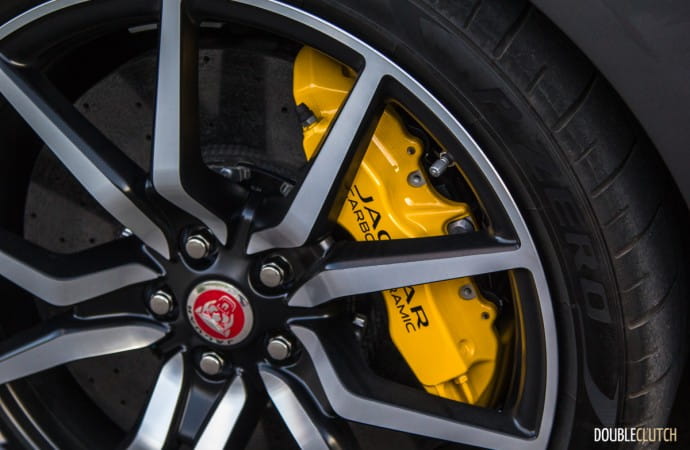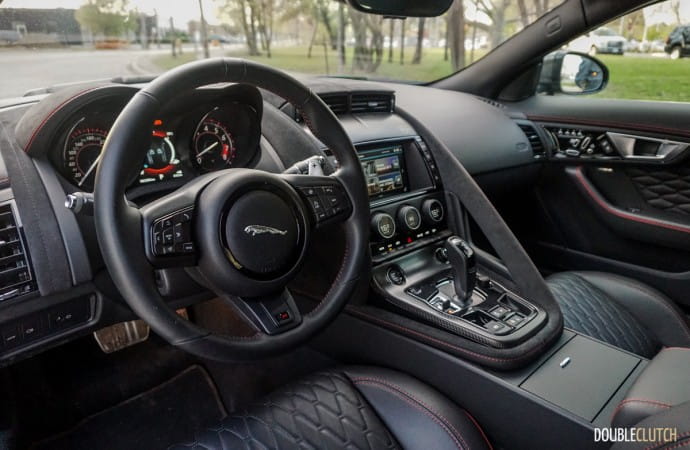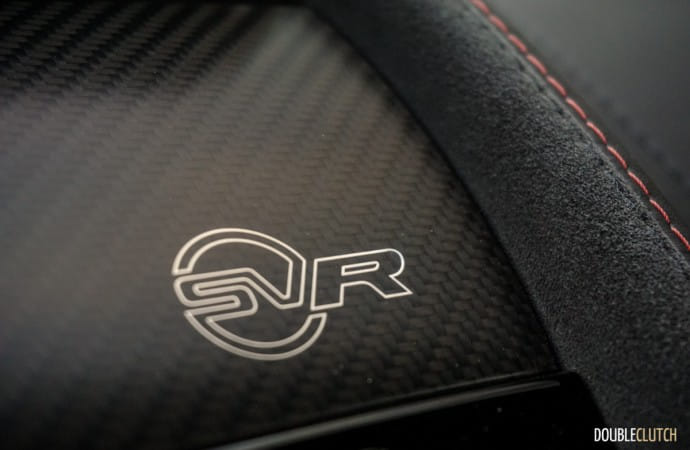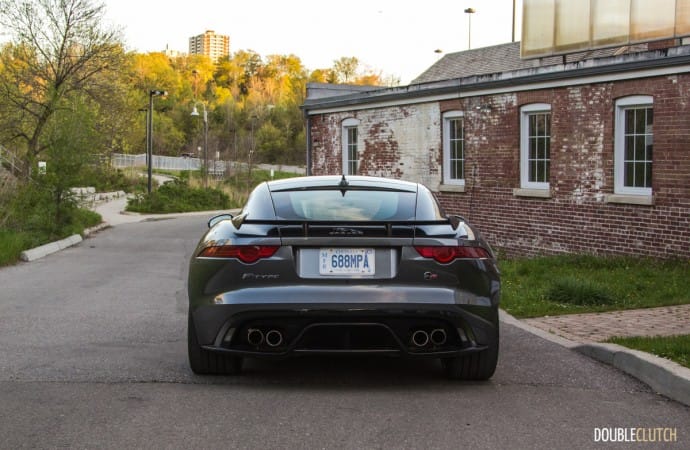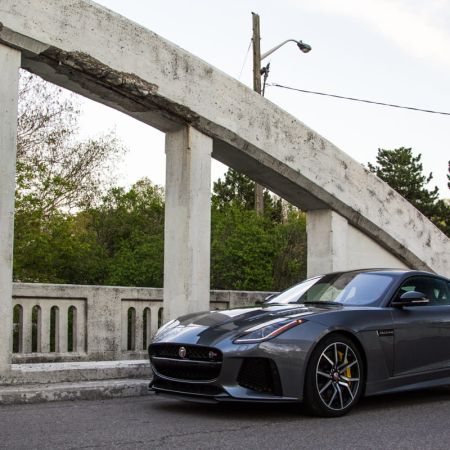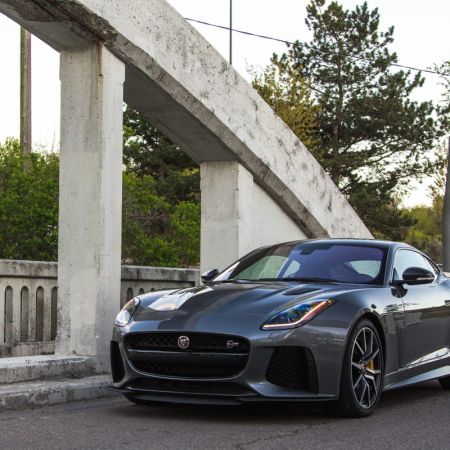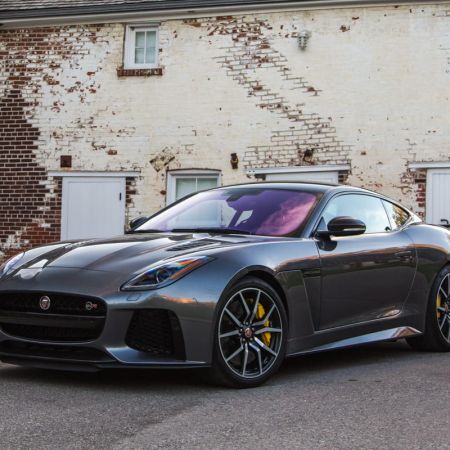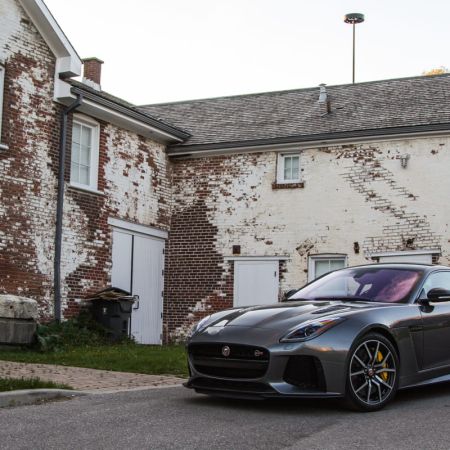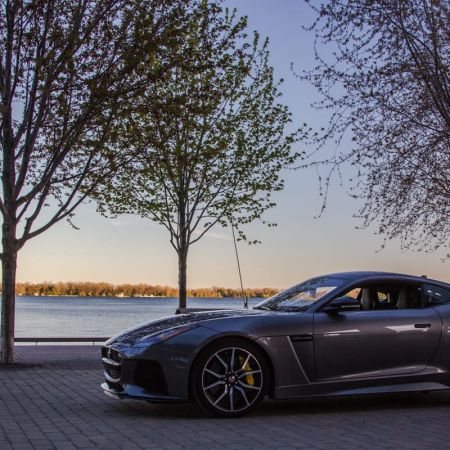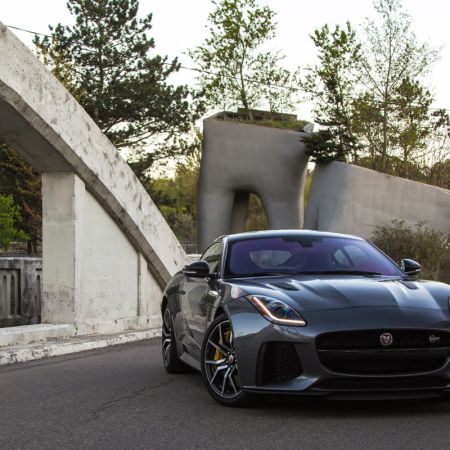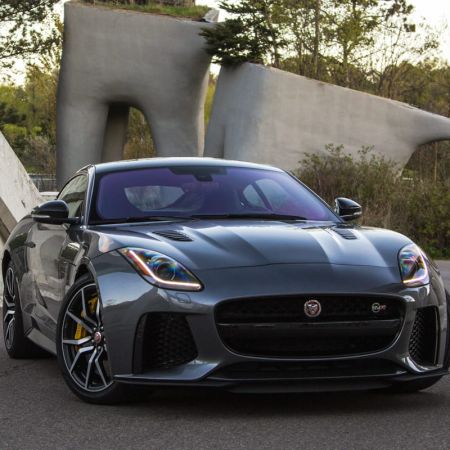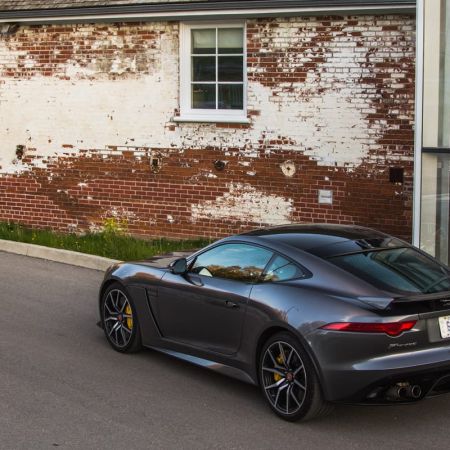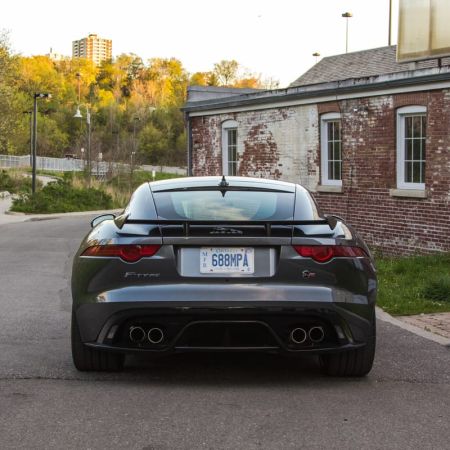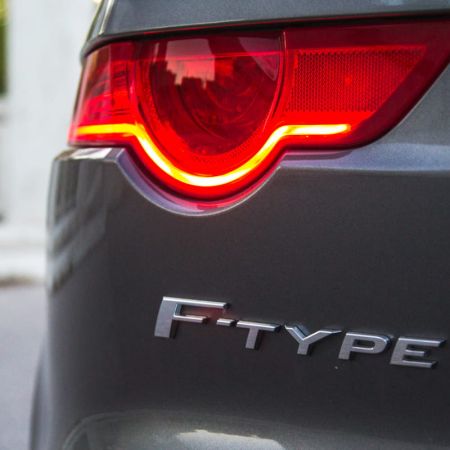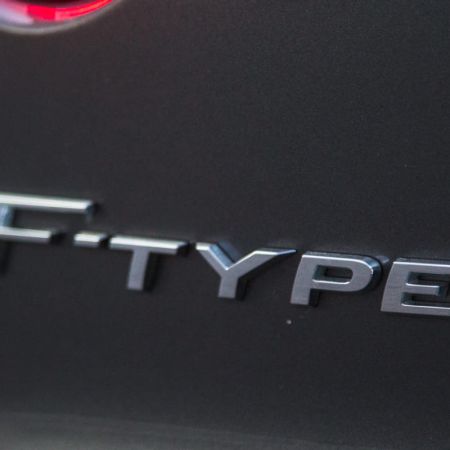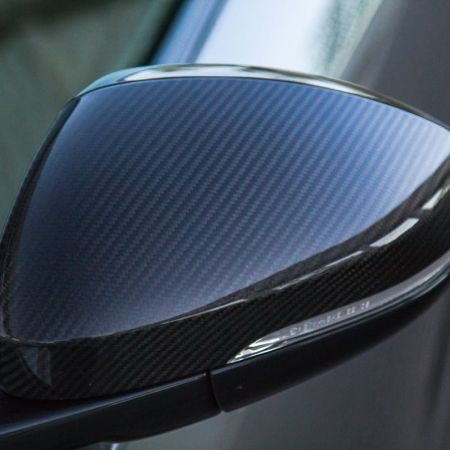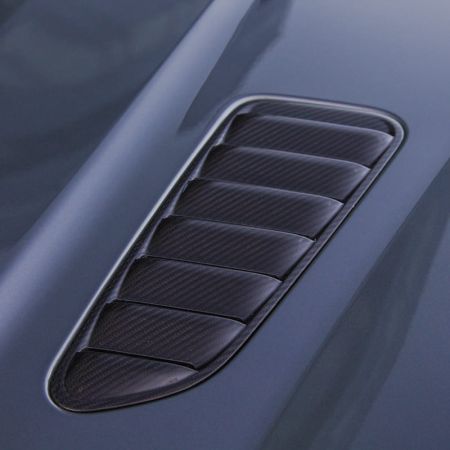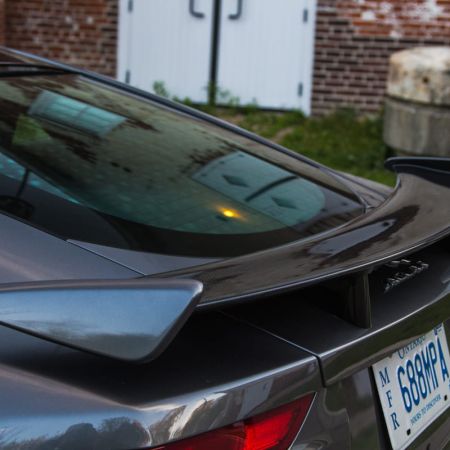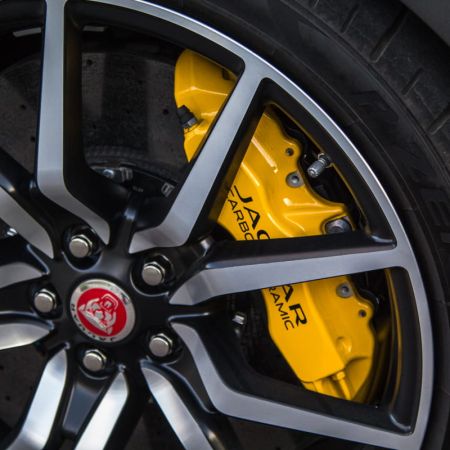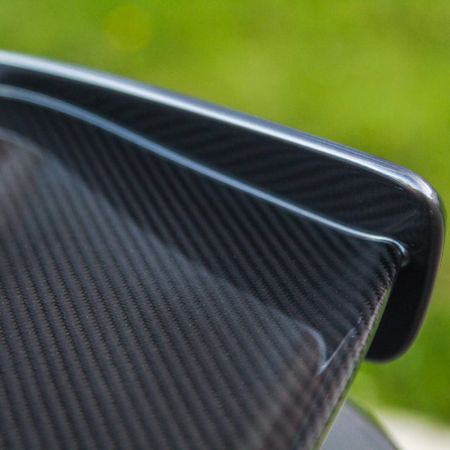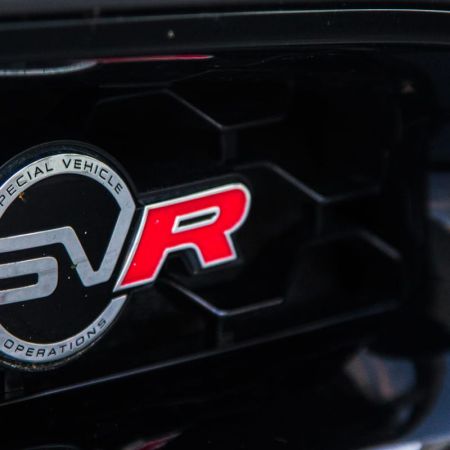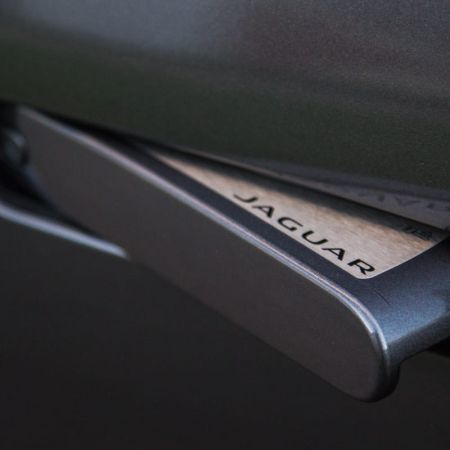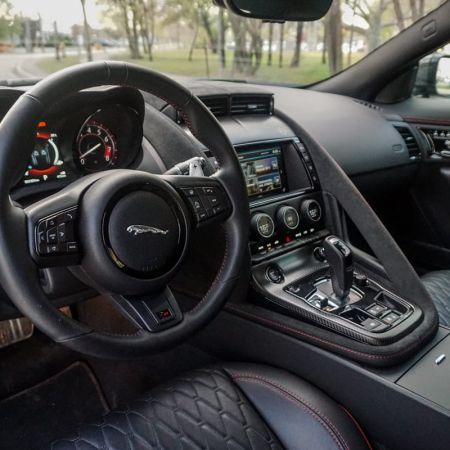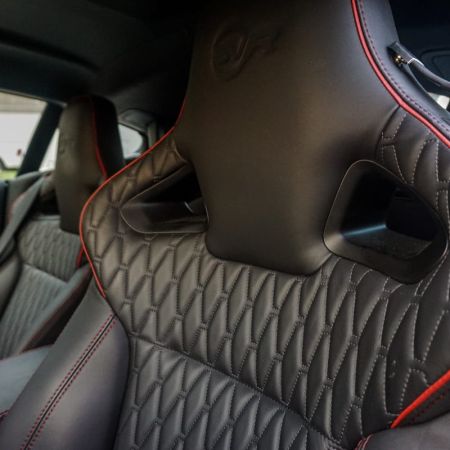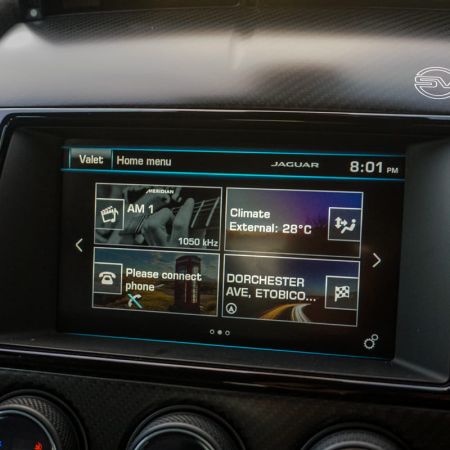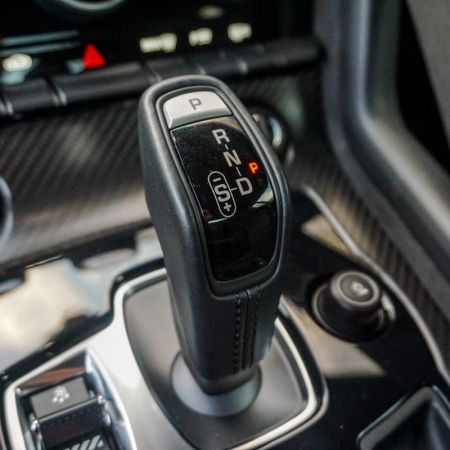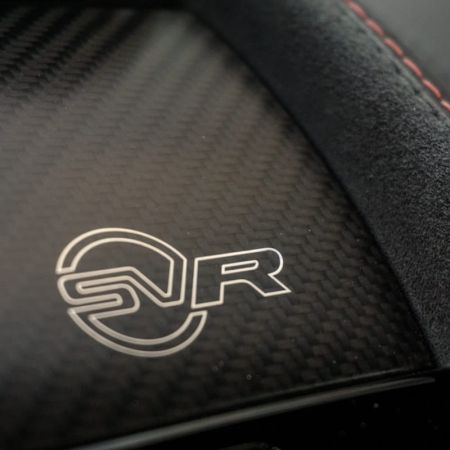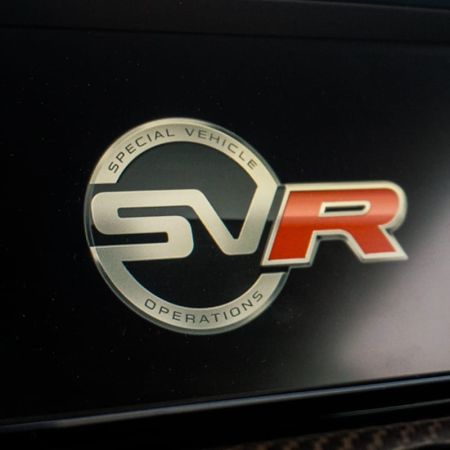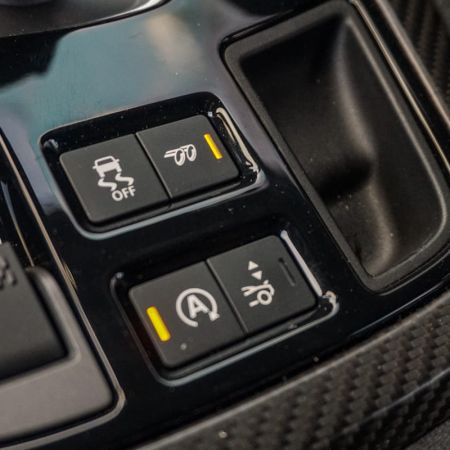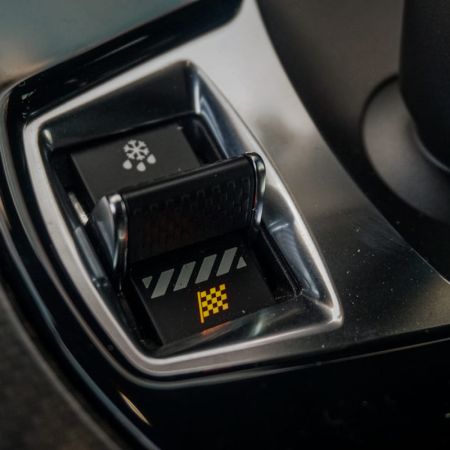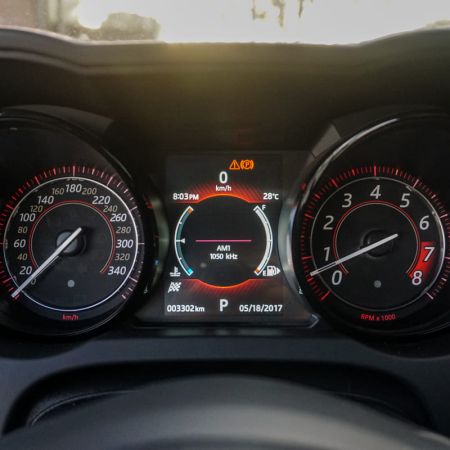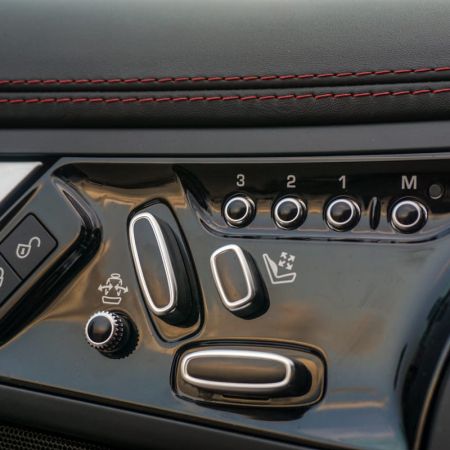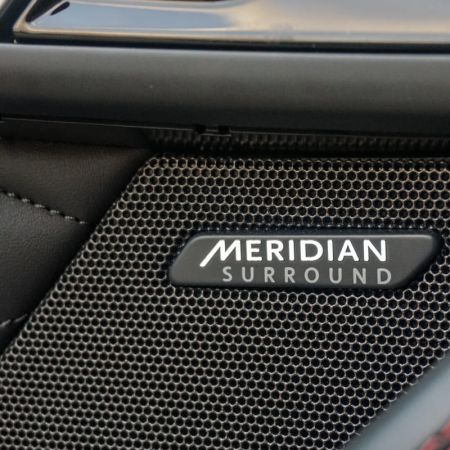Jaguar now has a “Special Vehicle Operations” division, also known as “SVO”. Akin to Mercedes-Benz’s AMG, BMW’s M or Audi’s RS lines, SVO is responsible for the production of faster, louder, and more aggressive versions of certain products. The first model produced under this designation was the Range Rover Sport SVR (reviewed here), but the stakes have just been raised. This is the 2017 Jaguar F-Type SVR Coupe, one of the most stunning two-doors on the road right now, and also one of the best sounding.
Available in both coupé and convertible variants, the F-Type has attracted a devout following over the past four years. The SVR is the range-topper and offers 20” forged alloy wheels, fully re-engineered aerodynamics, and carbon fiber bits all around the car including an active rear spoiler. The coupé version of the Jaguar also has a rear liftgate that opens up to reveal a generous cargo area without compromising any of the car’s beauty, and the hood is front-hinged, as it should be on a British sports car. LED lighting front and rear only adds to the prettiness, with stunning light designs. This is arguably the best looking car in its segment.
Powering the SVR is a tuned version of Jaguar’s supercharged 5.0L V8. Here it pushes 575 horsepower at 6,500RPM (equivalent to the F-Type Project 7) and 516 lb-ft. of torque between 3,500 and 5,000RPM. Compared to the F-Type R, power is only up 25, and 14 lb-ft. of torque. This power is courtesy of a new intercooler setup and functional hood vents that significantly improve air flow. Jaguar claims a sprint to 100 km/h in 3.7 seconds, and the car is capable of a top speed of 322 km/h. This thing is a rocketship, and the rear-biased all-wheel-drive system helps put the power down on full-throttle acceleration.
Four-cylinder and V6 models of the F-Type can be equipped with a six-speed manual transmission (reviewed here), but our testing reveals that the automatic is the one to have. Not only do auto-transmission models sound far better thanks to the exhaust tuning and calibration, the clutch damper on the manual F-Type is too sensitive. The automatic is far louder and makes even the most mature of drivers giggle on both acceleration and when backfiring. The SVR, like the R, can only be had with an automatic – this is the ZF eight-speed that snaps off quick shifts. We opted to use manual shifting mode the vast majority of the time; it’s rewarding and responsive.
There isn’t a single car out there within $100,000 of the F-Type SVR that sounds better. Unique to this particular model is a titanium and Inconel exhaust that, when coupled to the supercharged V8, produces an aural symphony that’s akin to gunshots. When the engine is cold, it’s impossible to start this car quietly, as it revs up on engine start and results in a bit of backfire. There is a button on the console that can quiet things down a bit, but unless you’re driving through a very quiet residential neighbourhood or an area where noise laws are in effect, there’s simply no reason to tame the roar of the beast.
What about the handling? The F-Type line went to electric power steering just a few years ago, which did away with some of that analog feedback. Even still, the steering has a good amount of weight to it and is adaptive depending on the drive mode. Though all-wheel-drive, it’s not hard to induce oversteer with this V8-powered menace, and the car, though competitive price-wise with the 911 Carrera, is a bit more dramatic. The carbon ceramic brakes on this tester feature 398mm front and 380mm rears, which decelerate the car with immense power.
The interior of the SVR is special; perhaps the only F-Type interior that can be given this designation. Though the lesser models have a pleasant enough interior, there isn’t much drama going on there, almost causing a disparity with the exterior and motor of the car. Here though, there are unique SVR performance seats with a quilted pattern, and a mix of suede and leather throughout the cabin. This test vehicle also was equipped with a carbon fiber center console finish with SVR badging. The door panels also have quilting that matches the seats, and like the other models, the center dash vents disappear into the dashboard when the climate control is turned off.
One of the only real gripes with this car is the dated infotainment. The F-Type is the last vehicle in the JLR family to get the updated InControl Touch setup. It makes do with the old touchscreen that is slow to respond and has little to no smartphone connectivity, save for a standard Bluetooth connection. The navigation is tedious to operate and was not able to pick up some very old, popular streets within Toronto. On the plus side, the Meridian audio system is exquisite, and reproduces audio with flawless quality.
The power seats are very comfortable and have excellent support. Space is a premium inside the F-Type, and that’s a given. However, unlike other vehicles of this size, Jaguar has been generous with cubbies and storage for small items. The glove compartment is small, but there are two usable compartments; one in the center console and one between the seats. Atop the “between-the-seats” area is a shallow area to stash objects like a sunglasses case, wallet or toll road transponder. Taller drivers will be able to fit in this car with no issues; though one of our editors at 6’4 was challenged by headroom.
At $139,500 to start, the F-Type SVR costs significantly more than the $68,500 base price for the Ingenium four-cylinder model. Add in $820 for the carbon fiber interior upgrade, $5,100 for a full SVR Carbon Fiber package (hood louvres, mirror caps, front splitter), and $510 for a powered tailgate. This car was also equipped with the $13,260 Carbon Ceramic Brake Package, which also adds Style 1041 10-spoke 20” wheels and yellow calipers. The total sticker on this vehicle crested $165,000, which puts it right in line with the Porsche 911 Carrera S (reviewed here).
Jaguar has not released official fuel efficiency numbers for this vehicle at the time of this writing, but we estimate somewhere in the region of 15L/100km city and 11L/100km highway. The fuel tank itself will hold 70L of premium fuel, though with our heavily city-based test, we saw 16.1L/100km. Of course, it’s difficult to keep fuel economy down when the car is this fussy and this much fun, but our own anecdotal evidence with other models of the F-Type (reviewed here) proves acceptable efficiency over longer highway commutes.
In a way, the F-Type SVR is a bit of a grand tourer. Sure, it’s smaller than the BMW 650i (reviewed here) and competes more with the Mercedes-Benz SL, but the appeal in the SVR is its ability to convert seamlessly from a nimble sports car with a loud bark into a mature, grown up touring coupé. The 2017 Jaguar F-Type SVR may not pack the precision of the iconic 911 Carrera, but it has enough punch to stay with the pack and checks off all of the right boxes for driving purists. This is a car that not only will age beautifully, but will likely become a sought-after classic in the decades to come.
2017 Jaguar F-Type SVR Gallery
See Also:
2017 BMW 650i xDrive Cabriolet
2017 Jaguar F-Type V6 S Convertible



